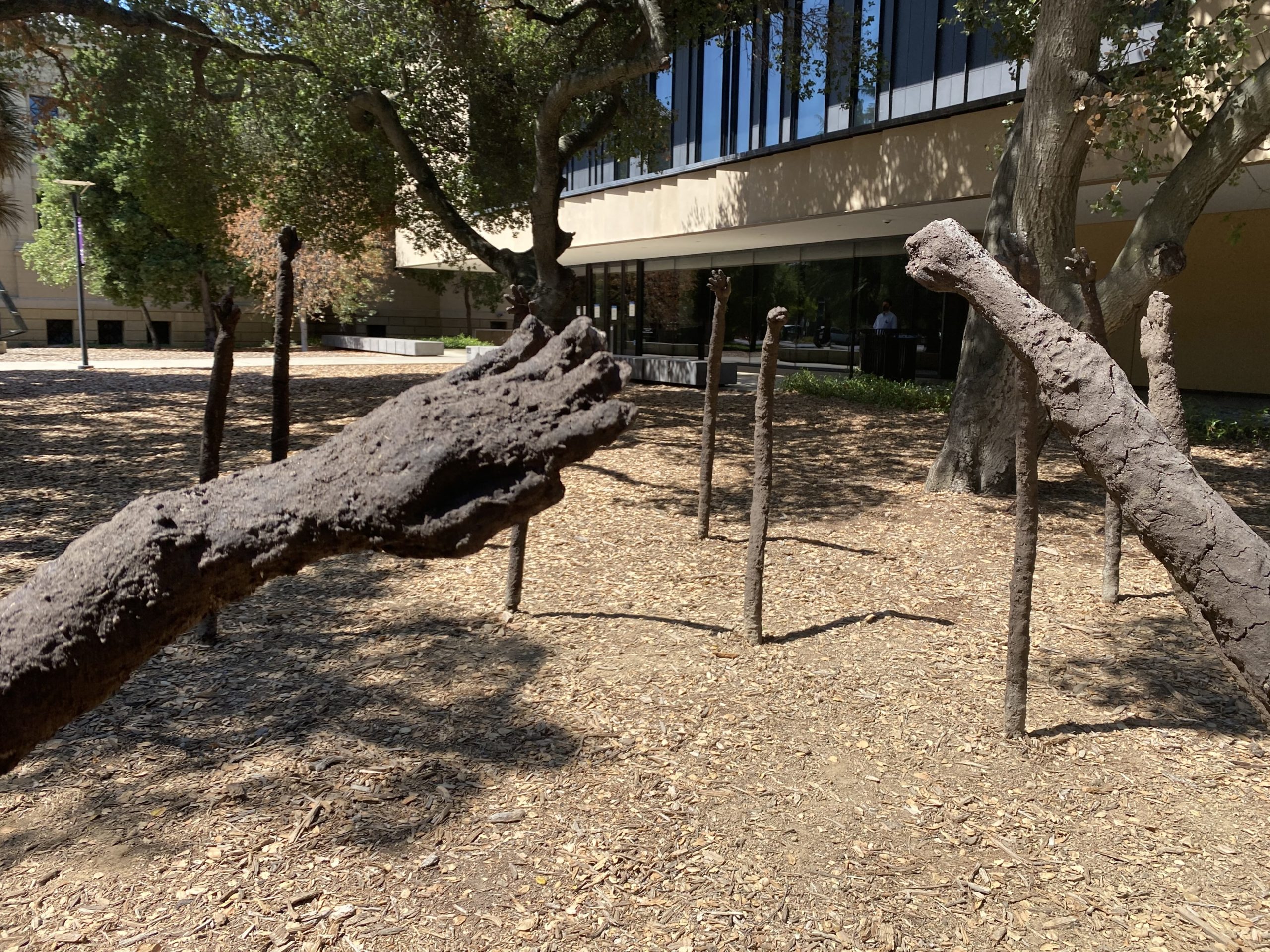The Stanford Daily sat down with artist and writer Kiyan Williams ’13. One of their exhibits, “Reaching Towards Warmer Suns,” is currently being featured at the Anderson Collection at Stanford University from Jul. 29 to Dec. 5. Williams has also created numerous other works of art, such as “Pig Roast,” inspired by police violence toward Black people. They previously worked at Virginia Commonwealth University and served as a fellow with New York University. Their art will be exhibited in New York City this coming fall.
The Stanford Daily [TSD]: What inspired your current exhibit, “Reaching Towards Warmer Suns” with the Anderson Collection at Stanford?
Kiyan Williams [KW]: As an artist, I like to find connections between the environment we inhabit and the experiences and histories of Black and queer people in America through the lens of migration diaspora. When I was originally making “Reaching Towards Warmer Suns,” I was living in Richmond, Virginia, and teaching at Virginia Commonwealth University. I would go on walks by the river while I was exploring the city, and I learned that the trail that I would walk along was a former dock with the transatlantic slave trade. It was kind of under-acknowledged and in such proximity to where I lived. I was inspired to create public artwork to acknowledge the obscured, erased, unacknowledged history. At the same time, public conversations were taking place about the role of — or critiquing — statues of Confederate criminals throughout the United States, and so there was a public conversation happening about, “what is the role of public art,” “what is the role of monuments to white male war criminals.” Given all of that, I was inspired to create a public artwork, a monument rooted in a different aesthetic and conceptual framework.
TSD: Could you go more into depth about why you choose to use soil in so much of your artwork, and especially in conveying your different messages both historically and politically?
KW: When I was an undergrad, I took a class with Cherríe Moraga, who was a Chicana, lesbian, feminist playwright and poet. She introduced me to the work of Ana Mendieta, an artist who often worked with Earth, and would insert herself into different environments as a way to think about her experiences with displacement and connection. I was really inspired by the possibility of connecting with Earth as a way to think about our relationships to the land.
TSD: You use hands and different shapes in your artwork, and especially in “Reaching Towards Warmer Suns,” the arms are quite curving and long. Was there any importance or message you wanted to convey through the shape and curvature of the arms?
KW: I find lots of inspiration through observing — thinking about the world as not just human-centric. The world is expansive and includes plant life, flora, other forms of life. And so I often find inspiration from just acknowledging and thinking about the world as an ecosystem of interdependent relationships between humans and non-human life. In thinking about the sort of larger ecosystem we live in, I look toward relationships between people, and bees, and plants — for that particular piece I just found lots of inspiration from the trees that were growing along the riverbank that I would take walks on. So the length of the curves kind of mirrors those trees, and then when I installed the work, I always installed them in relation to and in response to the trees around them. In the grove at Anderson, they’re installed within a grove with the circle of trees around them, and they kind of mirror the shape of those trees.
TSD: What impact do you hope your “Reaching Towards Warmer Suns” piece will leave on viewers?
KW: One of the great things about being an artist and creating art for the public and for a wide range of people is that I love how different people interpret the work. For example, one of my favorite things is watching kids play with the work and high-five the hands. When I presented the work at Socrates [Sculpture Park], I had a conversation with a Pakistani woman and her two children who were at the park when I was installing it, and her son was so excited about the work. She interpreted the work with her kids without me saying anything about it, and she was able to interpret it through a lens of thinking about people who were displaced and dispossessed, but who ultimately were fighting for freedom; she was able to look at the work and interpret it for her kids in that way. But then her son said to me, “Oh, it looks like Jack and the Beanstalk, like someone put a bean and then it’s growing up to the sky.” And so, I love seeing the range of ways that people interpret art — both thinking about the history and my own sort of messages that I want to convey, and also creating new meaning and really interacting with the work. By interact, I mean touch it or really engage with it, walk through, sort of come up with their own experiences. But it’s also going to be a reminder of the kind of history that haunts the land, including California.
This interview has been condensed and lightly edited for clarity.
